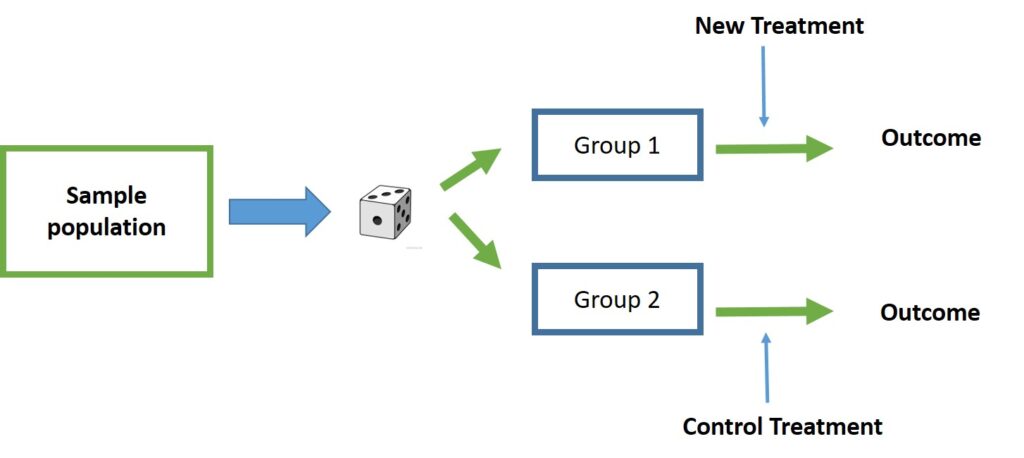The population receiving the program or policy intervention is randomly selected from the eligible population, and a control group is also randomly selected from the same eligible population in a randomized controlled trial (RCT), which is an experimental form of impact evaluation.
It tests the degree to which particular, planned impacts are being made. The random assignment of units (such as persons, schools, villages, etc.) to the intervention or control groups is what makes an RCT distinct. One of its advantages is that it offers a very strong response to questions of causality, helping program implementers and evaluators in understanding that what is being accomplished is due to the intervention and nothing else.
It is a study design where participants are randomly assigned to an experimental or control group. In a randomized controlled trial (RCT), the outcome variable under study is the sole expected difference between the control and experimental groups at the time the study is undertaken.

Read More:
How To Calculate the Sample Size for Randomized Controlled Trials (RCT)
Difference Between One-tailed and Two-tailed Test
Example of Randomized Controlled Trial
40 trial participants were randomly divided into equal groups of 20 for the experimental group and the control group, to compare the effects of a new type of short-wave UVA-blocking sunscreen to a regular long wave UVA-blocking sunscreen on skin health in general. Then, the state of each participant’s skin was originally assessed. The control group used long wave UVA sunscreen daily, while the experimental group used short wave UVA-blocking sunscreen.
Both groups’ overall skin health was assessed after a year, and the results were statistically examined. 60% of the individuals in the control group experienced improvements in overall skin health as a result of daily use of long-wave UVA-blocking sunscreen. 75% of the participants in the experimental group experienced improvements in overall skin health as a result of daily use of short-wave UVA-blocking sunscreen.
Advantages of Randomized Controlled Trial
- Simpler than observational studies to blind or mask.
- Those who are participating are classified into distinct populations.
- With the use of well-known statistical tools, results can be analyzed.
- Any population bias will be “washed out” by good randomization.
Disadvantages of Randomized Controlled Trial
- Costly
- Loss due to lack of follow-up attributed to treatment.
- Volunteer biases: It’s possible that the population participating isn’t representative of the entire population.
Design pitfalls of Randomized Controlled Trial
- A single population should only be studied in an RCT.
- The only differences between the experimental group and the control group should be the variables under study.
Statistical test for a randomised controlled trial (RCT)
The statistical test for a randomized controlled trial (RCT) depends on the outcome variable and research design. Some popular statistical tests used in RCTs include:
T-test: This test compares the means of two groups (such as a treatment group and a control group) for continuous outcome variables.
ANOVA (Analysis of Variance): This test analyses means across many groups and is appropriate for continuous outcome variables.
Chi-square test: This test analyses categorical outcome variable proportions across groups.
Logistic Regression: This test is used for binary outcome variables and is useful for examining the association between several independent factors and a binary outcome.
Cox Regression: This test is used for time-to-event outcome variables and helps analyse the link between numerous independent variables and the time to an event.
The statistical test you use depends on its assumptions and your data. It’s vital to consult your supervisor or a statistician to utilize the right test.



